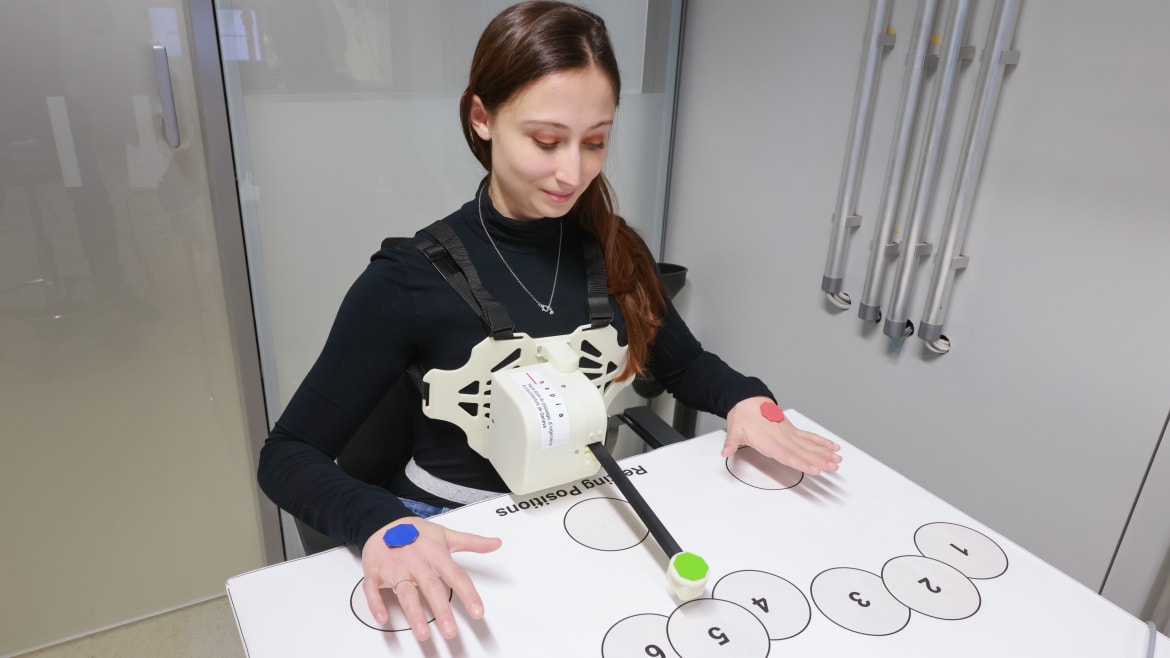Alain Herzog / EPFL
We’ve all been there: Maybe you’re hauling your groceries to the front door that you need to unlock, or you’re carrying an order of coffee for a car full of friends, or you’re trying to juggle cooking dinner with taking care of your kids. You can’t help but think, “Man, I wish I had a third arm.”
Thanks to a team of scientists, that may soon become a reality. Neuroengineers at Ecole Polytechnique Federale de Lausanne (EPFL) have successfully developed and tested a design for a robotic third arm that’s controlled by your diaphragm. In a study published Wednesday in the journal Science Robotics, the team described how the device can help scientists gain a better understanding of the human brain—while also augmenting your body with an extra robotic arm (XRA).
“Users can adapt and learn to control XRAs,” Gieulia Dominijanni, a neuroengineer at EPFL and first author of the study, told The Daily Beast. “The thoughtful design of human-machine interfaces is key to ensure that the enhanced capabilities provided are not a mere remapping of existing abilities.”

